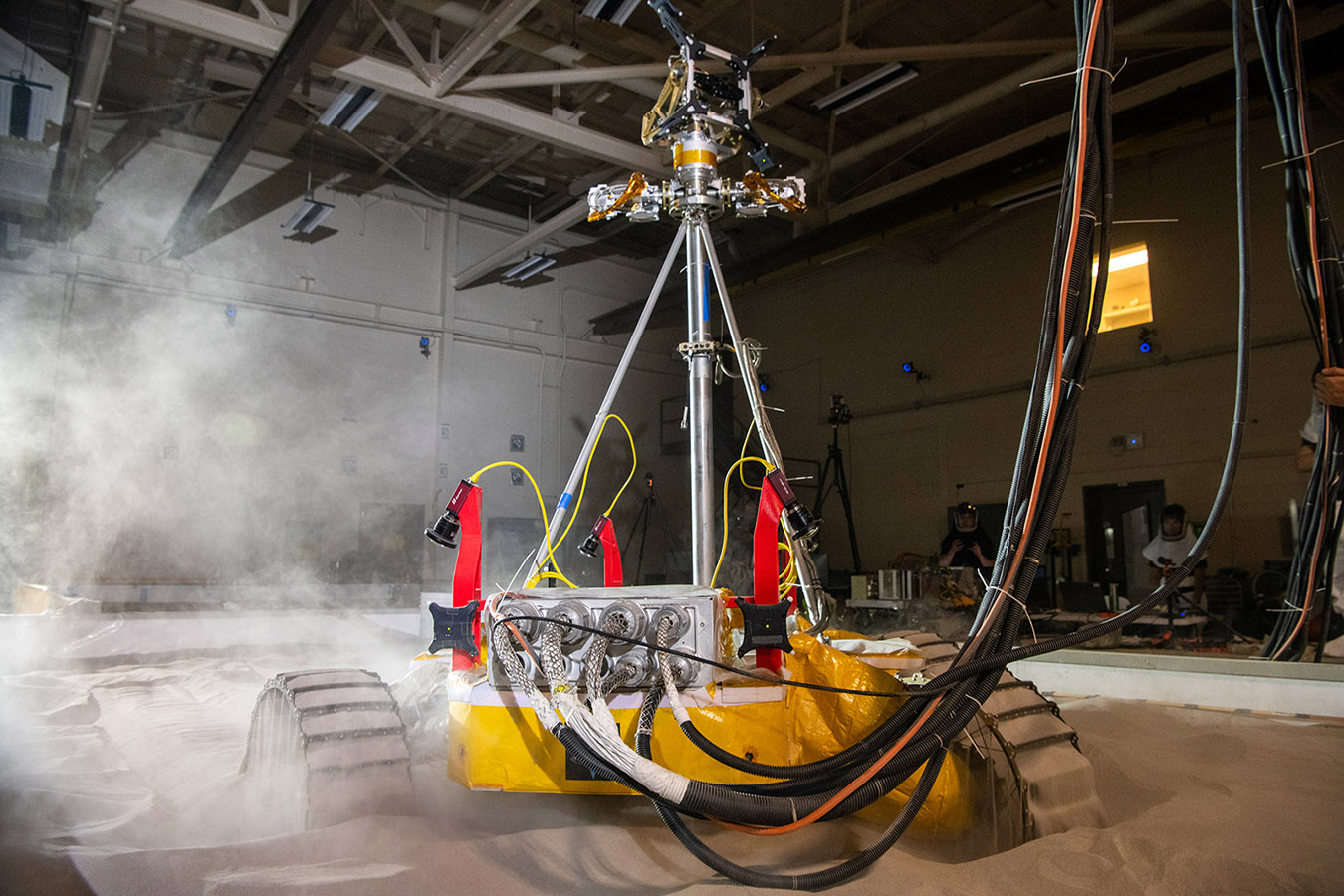Stay Up to Date
Submit your email address to receive the latest industry and Aerospace America news.
The Space Resources Technical Committee advocates affordable, sustainable human space exploration using nonterrestrial natural resources to supply propulsion, power, life-support consumables and manufacturing materials.
In August, the first results of the Mars Oxygen In-Situ Resource Utilization Experiment, or MOXIE, were published in the journal Science Advances. MOXIE produced oxygen from atmospheric carbon dioxide onboard the Perseverance rover, operating 11 times during the extremes of night and day at a mass flow rate of up to 10.4 grams per hour, greatly exceeding mission goals and demonstrating that oxygen production from the Martian atmosphere for human consumption and rocket fuel is feasible. Efforts are underway with technology partners at the Massachusetts Institute of Technology, Utah-based OxEon Energy, Colorado-based Air Squared and elsewhere to show mass and power requirements of a system scaled to produce between 2 and 3 kilograms per hour of oxygen for propellant and breathing air for Martian explorers. In July, an OxEon solid oxide electrolysis unit for lunar water electrolysis completed testing at the Colorado School of Mines under NASA’s Tipping Point program, paving the way for lunar water propellant production.
NASA continued developing its Polar Resources Ice-Mining Experiment-1 after selecting the Shackleton Ridge region of the lunar south pole as the PRIME-1 landing site in November 2021. The experiment, targeted to launch to the lunar surface in 2023, consists of a drill from Honeybee Robotics that will retrieve regolith samples from up to 1 meter below the lunar surface. Sublimated volatiles will be evaluated using a mass spectrometer provided by NASA’s Kennedy Space Center in Florida. In July, NASA moved the launch date of the Volatiles Investigating Polar Exploration Rover, or VIPER, back a year to November 2024 to accommodate risk-reduction testing of the Astrobotic Griffin lander that will land in the Nobile crater region of the lunar south pole to investigate icy regolith. In June, the VIPER Moon Gravity Representation Unit completed system-level mobility verification testing at the Simulated Lunar Operations Lab at NASA’s Glenn Research Center in Ohio, with tests over varied terrain of slopes, rocks and craters.
In preparation for a prospecting mission targeted for 2026, Canadensys Aerospace of Ontario delivered specialized rover wheels to the Canadian Space Agency in April after completing performance and durability tests in December 2021. Rover mobility subsystems were operated in regolith simulant for up to 2,000 kilometers to test wheels, lubricants and dust seals.
In August, Sierra Space of Colorado completed a test readiness review with NASA of its carbothermal reactor to extract oxygen from lunar regolith in a project supported under Small Business Innovation Research Phase III funding.
In June, the MIT Space Resources Workshop team won first place in NASA’s annual Revolutionary Aerospace Systems Concepts — Academic Linkage competition with an entry that features systems to produce, store and distribute 50 metric tons per year of bipropellant on Mars. In June, the Colorado School of Mines and Lockheed Martin hosted the inaugural Over the Dusty Moon Challenge, which tasked student teams with demonstrating a regolith delivery system to an elevated receiving platform. In June, NASA announced Phase 2 of its Break the Ice Challenge, which challenges teams to continue development of their icy regolith mining designs created during Phase 1 and to build prototypes. The competition will culminate with teams conducting long-duration tests, with test plan winners to be announced in December.
Contributors: Kevin Cannon, Mike Hecht, Julie Kleinhenz, Diane Linne, George Lordos, Erin Rezich, George Sowers, Paul van Susante, Peter Visscher and Brant White
Stay Up to Date
Submit your email address to receive the latest industry and Aerospace America news.




